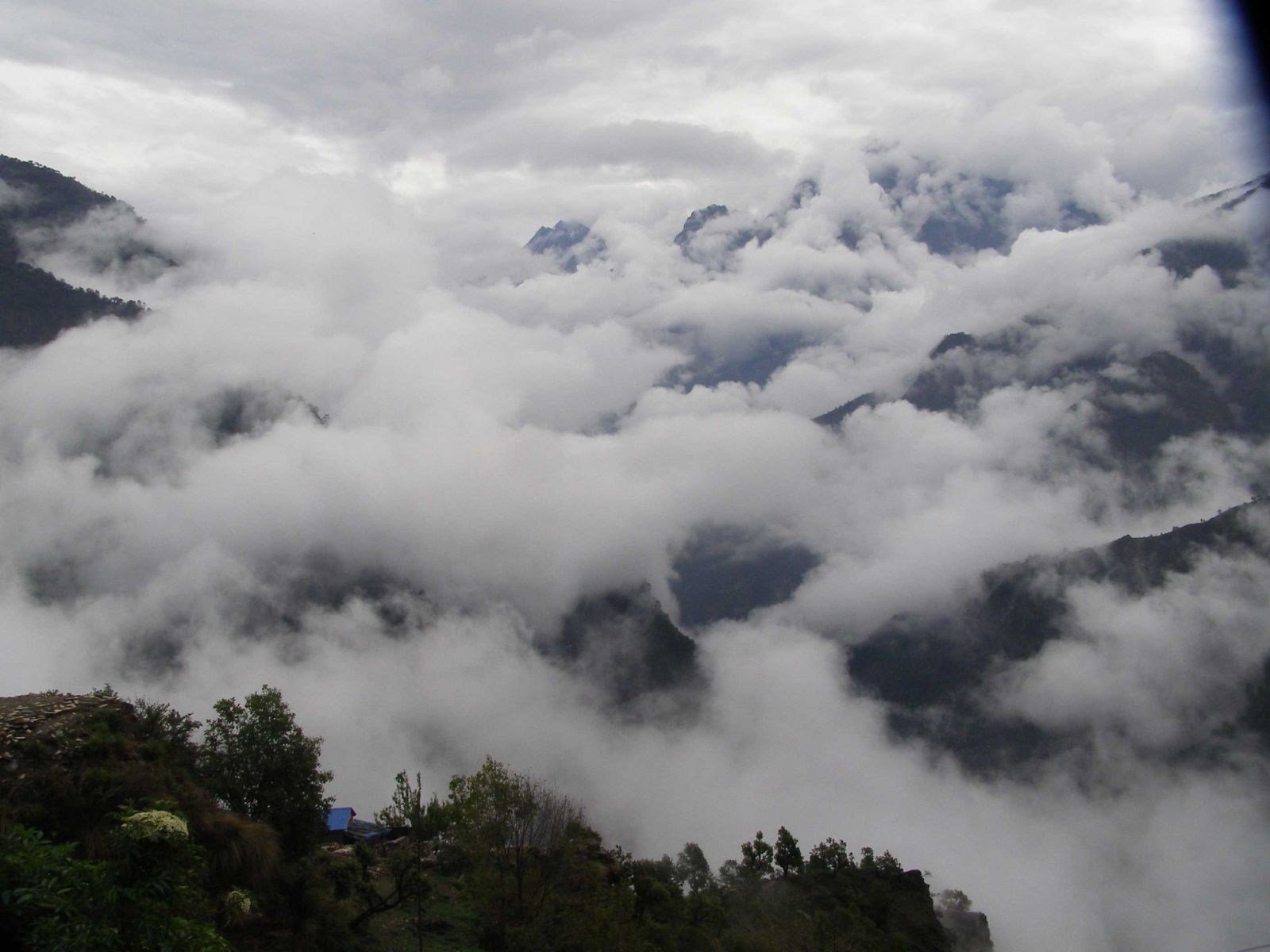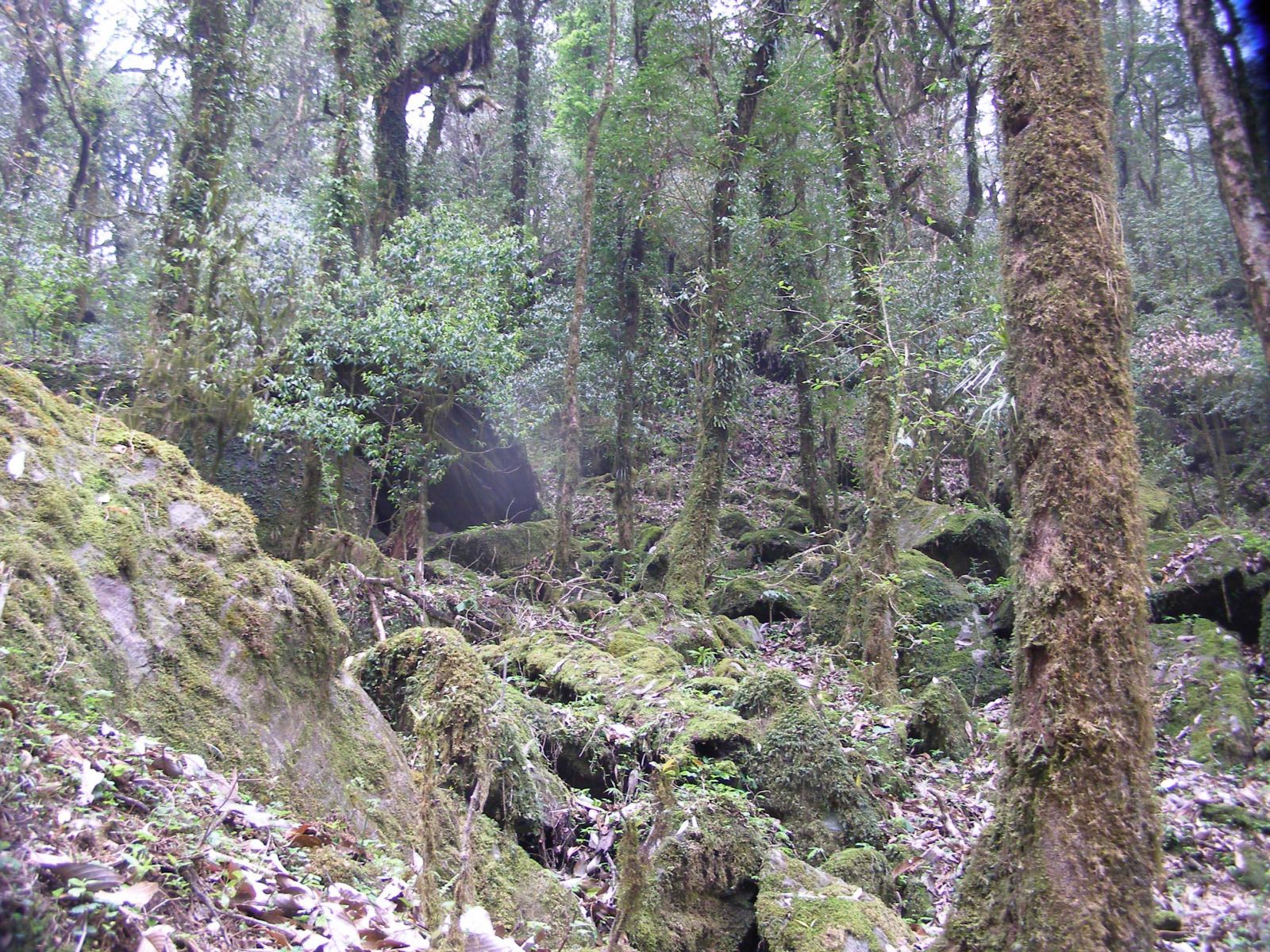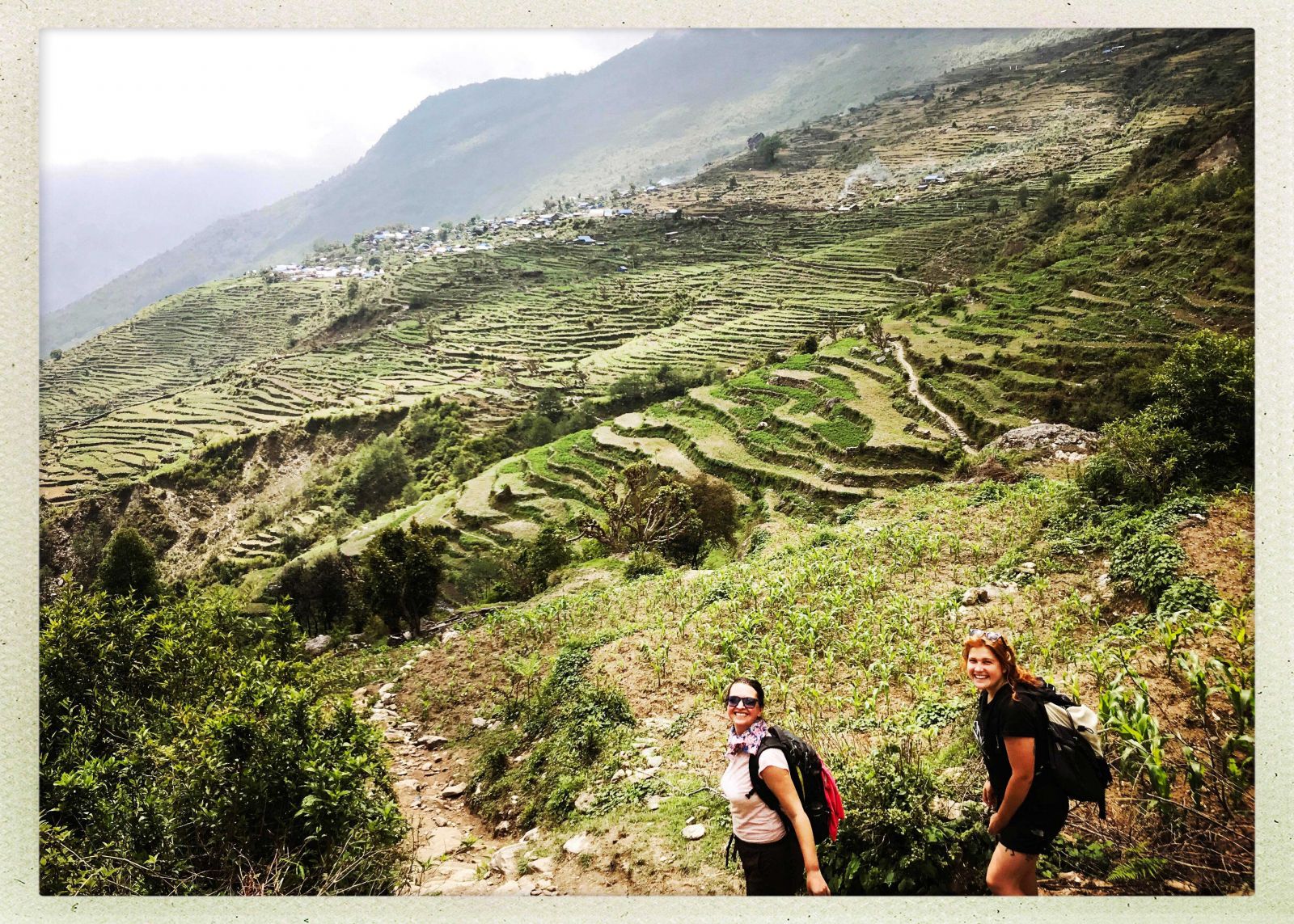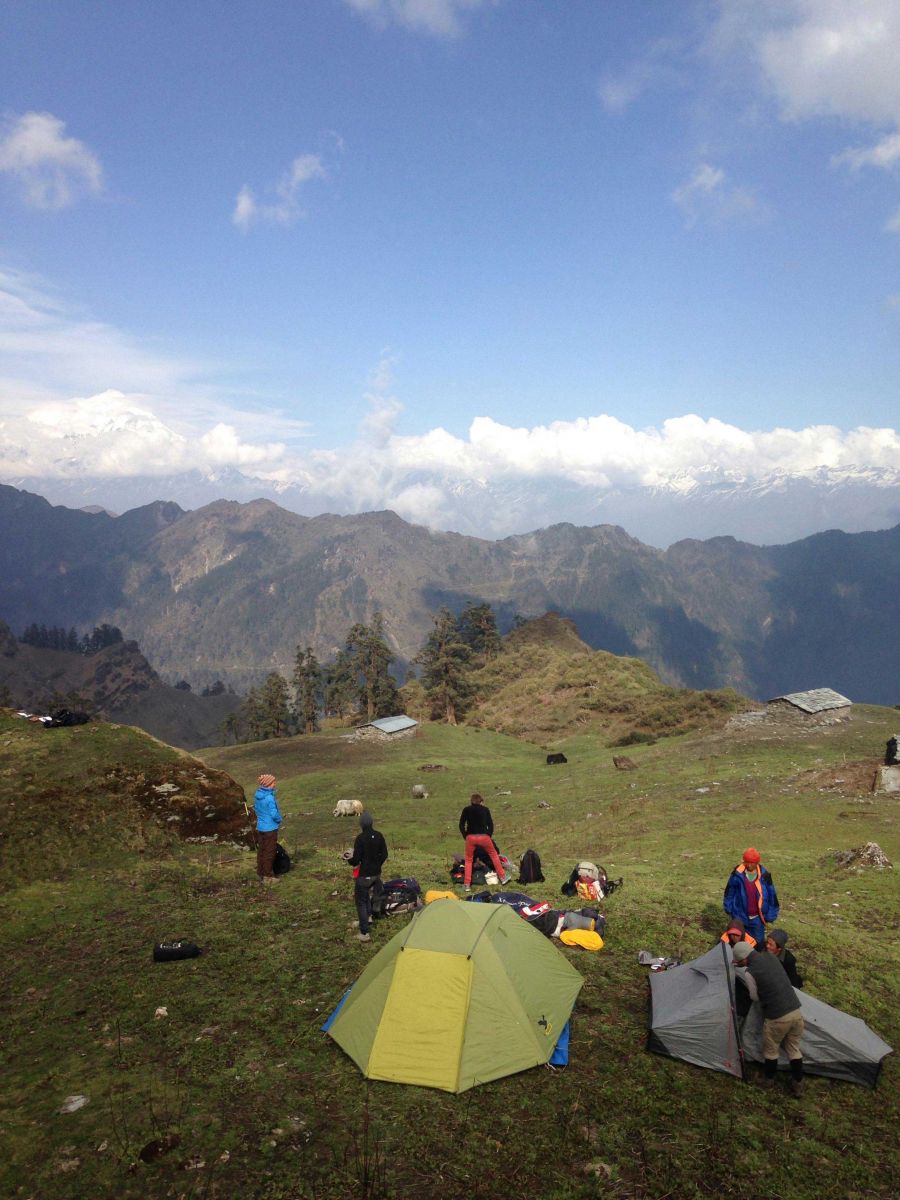
This was my first real trek and I was in shock. Had I looked at the brief, I doubt it would it have changed my mind about going along. I had no bearings. My head thought back to the Nyarshang Valley in a balmy late September. We went up in a jeep and made day treks out from a guest house base. But not this time. This trek was all about steep ups and tricky downs, and the ever distant end was nowhere in sight.
I had set out on a ten day hill-trek with a group of friends. Our starting point was Barpak, the epicenter of the 2015 earthquake. We planned to cross Gorkha into Dadhing and finish in picturesque Gatlang, a jewel of the Langtang region. The starting altitude was 1750 m; our highest climb was to Pansang La, 3800 m, on day nine. We’d cross 12 villages, climbing up and down steep valleys every day. This trek was about endurance—I just didn’t know it yet.
As it turns out, I’m good at sitting and sleeping in the jeep and not so good at grabbing my day pack and powering 800 m up a hill to the first night’s guest house. Trail runners, look away now. You’d fly up that incline as a warm-up to the rest of the route. Out of breath, wheezing up a hill that my compadres had seemingly floated up, I was doubting the sanity of choosing this over ten days of meditation. At that moment, a man in his 50s passed us, carrying a house beam on his back. An old porter, grinning from ear to ear, whose back was bent at 90 degrees to his legs, followed shortly after. They were walking from necessity; we walk awkwardly, and for fun. But the rewards were quick on arrival: spectacular views of Buddha Himal, and further east Ganesh Himal 1, our compass point for the next day, awaited us.
Downs and ups, legs trembling as we made a sharp descent from Mamche and through a building site at Laprak. Some people told us the new structures—all concrete walls and blue tin roofs—were for the villagers in Laprak, whose existing, old settlement was in a perilous position. Others said it was a new army base.
From Laprak we headed down to the village of Singla, where silomachar spiced up the lunchtime daal bhaat. Deciding that at midday, we had some legs left in us, the team battled on in an attempt to reach Khole.
When we planned this trip, we asked the guide for lots of rivers to bathe, swim, rest, heal. I could hardly appreciate our first one, as the mental barriers thrown up by the seemingly endless path ahead of us left me feeling less than able to do this. The elation of arriving in Khole and dusk was dampened by fatigue. We looked back at our journey and tried to trace our route on the map. There were no roads up there, and the world’s favorite map maker doesn’t know about the trails we had trodden. This was turning into a hipster trek. We were there before it was well known. We’d also bought fresh coffee, fancy cheese, and smoked ham.
After the luxury of a first night in a ridge-top guest house, each day after ended in the same way. Nine of us arrived in a village; the guide would head in to find us a place to stay, asking anyone who was around if they knew of a guest house, a house, or just a room with a roof where we could bed down.
No one was expecting us, yet the villagers welcomed us every night. We slept in a guest house that had already closed up for the season. Children and families were turfed out of rooms. We slept on wooden, mattress-less beds. World Food Program rice sacks and flat screen TVs still with plastic and dust covers became familiar sights. In one village, where the entire adult population had gone in search of yarsagumba, one woman unlocked her neighbor’s empty house for us.
On a work trip to Jomsom years earlier, someone floated the idea of a bona fide trek. Wouldn’t it be cool to get out there for days, moving every day? Back then, my answer was a flat no. But by now, my appreciation of walking in remote places had altered.

Heading out into nature provides unfettered opportunities to figure things out about yourself. As it turns out, I have a dodgy left knee, which made its presence felt after a few days. Under increasingly annoying pain and the sight of more hills ahead, I started to hit rock bottom. I had no idea what this experience could do to my mind. I was down, fragile, precious, in tears, all on rotation. Everyone else was faster, better, fitter. They could all speak when we were walking, I could barely look beyond the next step.
But, we were only halfway, and going back was not an option. Although I did quickly estimate the distance to the nearest road and concocted an off-the-cuff farewell speech, my fellow walkers rallied around. They talked about the hills we’d already crossed, the seemingly insurmountable ground we’d covered, the mantras drawn on to get us this far. After this point, with the help of a knee bandage and regular doses of anti-inflammatories, I started to find my rhythm.
Each day, we could see our next potential destination on a hillside and mistakenly tried to will our way closer to the village. As the crow flies, a couple of hours walk, but a glimpse of sunlight reflected on solar panels in the distance means a whole lot of up and down in between.

Advice offered by locals differed wildly for each new destination. One route we had planned for six hours had taken one local man 12 hours to complete, he claimed. Following a group of traveling salesmen up to Mangegoth resulted in an off-trail jungle trek. Beautiful but tiring, as they suddenly burst into thigh slapping laughter, admitting they had not walked this route in a few years and had forgotten the way. Others had no idea where we were headed, nor how long it might take.
Here’s the thing about being on holiday—everyone else is at work or getting on with their lives, unaffected by this abstract and privileged concept of ‘days off.’ We crossed paths with several groups of migrant workers, mainly young men, on their way home. After years of work in the Gulf, a plane to Kathmandu and a bus to the vicinity, they cruised through the late blooming rhododendron forest, with pop music blaring from a speaker and toasting with the occasional celebratory bottle of rum.
We walked up Pansang La victoriously hanging prayer flags. A woman our age (well, somewhere between 22 and 42) took a more circuitous route, slowly and steadily climbing, goods tied to her back in a shawl. While we whooped and posed for photos, checking if each other had headaches, how we were feeling and whether breathing felt different, she casually walked past us and took the newly carved road on a three hour descent to Somdang.
But we stayed up on the hill that night, setting up camp on an eastern-facing prairie, home to three yaks. They ignored us while we worked, eventually strolling past for a closer look. Later that night, I saw three sets of eyes reflecting in the light from my headlamp; the yaks had settled down over the embers of our fire under a sea of stars. Although this was mid-May, our camp was hit by a ferocious snow storm during the early hours, when everyone lay awake in the tents, listening to the howling wind and snow lashing the canvas. I pulled my hat on and willed myself to sleep, waking up a few hours later unable to breathe. Panicked, it took me a few seconds to open the inner tent zip. “Altitude sickness,” I thought. “I’m done for, I’m in the middle of nowhere, I’ve probably got an edema, and we’re high up on a hillside, miles from anywhere.” I looked up, and the blue tent canvas was dark, opening the outer zip to a blanket of white snow outside. The whole tent was covered, stopping oxygen from getting in. I woke up my tent mates—Rousse Ourse and Golden Rosette, and the three of us knocked the sides until it became clear again.

Plume and Polo, our friends in the other tent, didn’t fare so well. Theirs had collapsed in the night, and they woke up with the tent and a few inches of snow right on top of them. But all the misery and near death experiences vanished from sight and mind when we stepped out the next morning. The sun pierced through a bright blue sky, fresh white snow covered the ground, the mountain tops, the gothalos. Exhilarating hardly does it justice.









